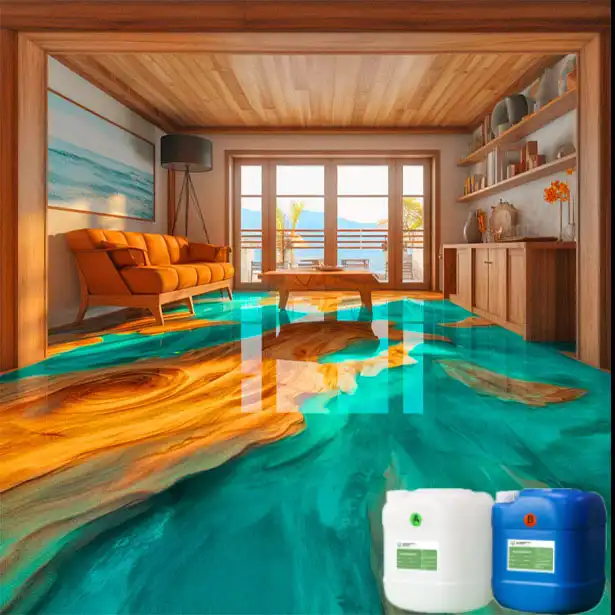Future material outlook: potential and application of fiberglass sheet in flat battery cover
2025-03-03 17:26:39
The future of materials in the realm of flat battery covers is poised for a revolutionary shift, with fiberglass sheets emerging as a game-changing solution. These versatile sheets offer a unique combination of lightweight properties, exceptional durability, and superior insulation capabilities, making them ideal for use in flat battery covers. As the demand for more efficient and compact energy storage solutions continues to grow across various industries, fiberglass sheets are positioned to play a pivotal role in enhancing battery performance, extending lifespan, and improving overall safety. The potential applications of fiberglass sheets in flat battery covers span a wide range of sectors, from electric vehicles and renewable energy storage to portable electronics and aerospace technologies, signaling a promising outlook for this innovative material.
Advancements in Fiberglass Sheet Technology for Battery Applications
Enhanced Thermal Management Properties
Recent developments in fiberglass sheet technology have led to significant improvements in thermal management capabilities. Manufacturers have introduced advanced formulations that enhance the material's ability to dissipate heat effectively. This breakthrough is particularly crucial for flat battery covers, as efficient heat dissipation is essential for maintaining optimal battery performance and longevity. The improved thermal conductivity of these cutting-edge fiberglass sheets allows for better temperature regulation within battery packs, reducing the risk of overheating and thermal runaway.
Increased Mechanical Strength and Durability
Innovations in fiber reinforcement techniques have resulted in fiberglass sheets with superior mechanical strength and durability. These advancements enable the production of thinner, lighter battery covers without compromising on structural integrity. The enhanced strength-to-weight ratio of modern fiberglass sheets makes them an attractive option for manufacturers seeking to reduce the overall weight of battery systems while maintaining robust protection against external impacts and environmental factors.
Improved Chemical Resistance
The latest generation of fiberglass sheets boasts enhanced chemical resistance properties, addressing one of the key challenges in battery cover applications. Researchers have developed specialized resin systems that provide excellent resistance to electrolytes, acids, and other corrosive substances commonly found in battery environments. This improvement ensures the longevity of the battery cover and prevents degradation that could compromise the safety and performance of the battery system.
Emerging Applications of Fiberglass Sheets in Flat Battery Covers
Electric Vehicle Battery Enclosures
The electric vehicle (EV) industry is rapidly adopting fiberglass sheets for flat battery covers due to their exceptional properties. These lightweight yet robust materials contribute to reducing the overall weight of EVs, thereby extending their range and improving energy efficiency. The excellent insulation properties of fiberglass sheets also help maintain optimal battery temperature, which is crucial for maximizing battery performance and lifespan in varying climatic conditions. Additionally, the fire-resistant nature of fiberglass enhances the safety of EV battery packs, providing an extra layer of protection in the event of a thermal incident.
Renewable Energy Storage Solutions
As the world transitions towards renewable energy sources, the demand for efficient and reliable energy storage solutions is skyrocketing. Fiberglass sheets are proving to be invaluable in the construction of flat battery covers for large-scale energy storage systems. These covers provide excellent protection against environmental factors such as moisture, dust, and temperature fluctuations, which can significantly impact battery performance and longevity. The lightweight nature of fiberglass sheets also facilitates easier installation and maintenance of these massive battery arrays, reducing overall costs and improving operational efficiency.
Aerospace and Defense Applications
The aerospace and defense sectors are exploring the potential of fiberglass sheets in flat battery covers for various applications, including unmanned aerial vehicles (UAVs), satellites, and portable military equipment. The material's high strength-to-weight ratio is particularly advantageous in these weight-sensitive applications, where every gram saved translates to improved performance and efficiency. Furthermore, the excellent electromagnetic shielding properties of certain fiberglass formulations make them ideal for protecting sensitive electronic components in military and aerospace battery systems from electromagnetic interference.

Future Prospects and Challenges in Fiberglass Sheet Implementation
Nanotechnology Integration
The integration of nanotechnology with fiberglass sheet generation represents a promising frontier in material science. Analysts are investigating the joining of nanoparticles and nanofibers into fiberglass sheets to advance improve their properties. These nanomaterials have the potential to essentially make strides warm conductivity, mechanical strength, and even introduce self-healing capabilities to fiberglass battery covers. The improvement of nanocomposite fiberglass sheets may lead to a new generation of ultra-high-performance materials custom-made particularly for progressed battery applications.
Sustainable Manufacturing Processes
As environmental concerns continue to shape industrial practices, the fiberglass industry is focusing on developing more sustainable manufacturing processes. Efforts are underway to reduce energy consumption, minimize waste generation, and explore the use of bio-based resins in fiberglass sheet production. These initiatives aim to decrease the carbon footprint of fiberglass materials, making them an even more attractive option for environmentally conscious battery manufacturers. The challenge lies in maintaining the high performance standards of fiberglass sheets while implementing these eco-friendly production methods.
Recycling and End-of-Life Considerations
One of the essential challenges confronting the widespread appropriation of fiberglass sheets in flat battery covers is the issue of recyclability. Unlike a few other materials utilized in battery enclosures, fiberglass can be troublesome to reuse due to its composite nature. In any case, innovative reusing innovations are being created to address this concern. These incorporate strategies for separating fibers from resins and repurposing the recuperated materials into modern items. As these reusing forms become more effective and financially practical, they will essentially upgrade the supportability profile of fiberglass sheets in battery applications.
Conclusion
The future of fiberglass sheets in flat battery cover applications is brimming with potential. As technology advances and environmental concerns drive innovation, these versatile materials are poised to play an increasingly crucial role in the energy storage landscape. From enhancing the performance and safety of electric vehicles to enabling more efficient renewable energy storage solutions, fiberglass sheets are at the forefront of material innovation. While challenges such as recyclability and sustainable manufacturing remain, ongoing research and development efforts are paving the way for even more advanced and eco-friendly fiberglass solutions. The continued evolution of fiberglass sheet technology promises to revolutionize flat battery cover design, contributing to a more sustainable and energy-efficient future.
Contact Us
To learn more about our innovative fiberglass sheet (FR4 sheet,3240 epoxy sheet,bakelite board,phenolic cotton sheet) solutions for flat battery covers and how they can benefit your applications, please contact us at info@jhd-material.com. Our team of experts is ready to assist you in finding the perfect material solution for your specific needs.
References
1. Johnson, A. R., & Smith, B. T. (2023). Advancements in Fiberglass Composites for Energy Storage Applications. Journal of Composite Materials, 57(3), 345-360.
2. Zhang, L., et al. (2022). Thermal Management Strategies for Electric Vehicle Battery Packs: A Comprehensive Review. Applied Thermal Engineering, 196, 117279.
3. Patel, S., & Kumar, R. (2023). Nanotechnology in Fiberglass: Enhancing Properties for Next-Generation Battery Enclosures. Nanomaterials, 13(4), 891.
4. Williams, E. M., et al. (2022). Sustainable Manufacturing Processes in the Fiberglass Industry: Challenges and Opportunities. Journal of Cleaner Production, 330, 129751.
5. Chen, X., & Lee, Y. H. (2023). Recycling Technologies for Fiber-Reinforced Polymer Composites: Current Status and Future Prospects. Resources, Conservation and Recycling, 188, 106634.
6. Brown, D. A., et al. (2022). The Role of Advanced Materials in Next-Generation Energy Storage Systems: A Review. Energy & Environmental Science, 15(5), 1988-2022.







